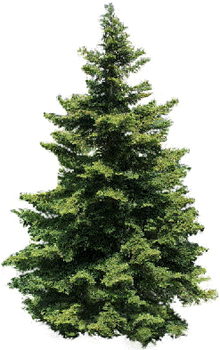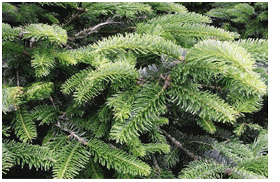...Best of Sicily presents... Best of Sicily Magazine. ... Dedicated to Sicilian art, culture, history, people, places and all things Sicilian. |
by Maria Mazzaro | |||
Magazine Index Best of Sicily Arts & Culture Fashion Food & Wine History & Society About Us Travel Faqs Contact Map of Sicily
|
How, one wonders, did these trees ever reach this parlous state of existence? Ancient Greek writers confirm that the mountains of northern and western Sicily, including much of Etna and the Peloritans, were once covered with these trees, whose bark and resin were used medicinally. By the Middle Ages, with the Arabs' colonisation of much of the island, founding towns and hamlets virtually everywhere, the trees were more widely harvested for their timber. Unfortunately, they were not replaced through arboriculture, except perhaps through the planting of olive trees in some areas. But a worse fate awaited the innocent firs that survived this initial onslaught. The War of the Vespers in 1282 saw the shift
of Sicily toward what later became the Spanish sphere of influence. The
Aragonese (and then the Spaniards) needed timber for construction of their ships, first for the fleet based in Sicily to
defend the island against incursions by the Angevins based at Naples, and later for their fleets based in Spain, where deforestation and excessive harvesting had already decimated the native conifer forests.
Yes, it is possible that some of the ships in the Spanish Armada were By 1700 the end was already near. Increasing deforestation (due to man-made causes) had already changed the face of Sicily, and at medium altitudes plane trees supplanted the pines. Due partly to the changing habitat, the Sicilian Deer and other fauna were already extinct. A few wild cats and wild boar remained; foxes and wolves were under siege. Aristocrat and peasant alike were indifferent to the situation. Only in recent years has a serious effort been made to save any of these creatures and the trees they once sought for shelter. As such trees go, the Nebrodi Fir is not a very large pine, at about fifteen meters in height - though in centuries past larger specimens were probably known. It grows best at an altitude of over 1400 meters. About the Author: Maria Mazzaro writes about nature and environmental topics. | ||
Top of Page |
 The Nebrodi Fir (sometimes
called the "Sicilian Fir"), known to botanists as Abies Nebrodensis
(a subspecies of Abies Alba), as its name implies, is a conifer native
to the
The Nebrodi Fir (sometimes
called the "Sicilian Fir"), known to botanists as Abies Nebrodensis
(a subspecies of Abies Alba), as its name implies, is a conifer native
to the  constructed of Nebrodi Fir, at least in part (such ships were built largely of
hardwood with some coniferous woods).
constructed of Nebrodi Fir, at least in part (such ships were built largely of
hardwood with some coniferous woods).